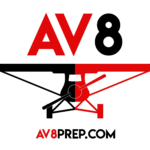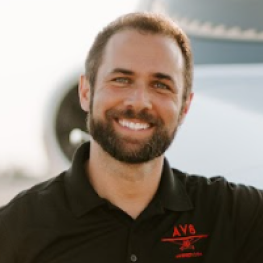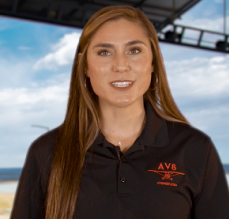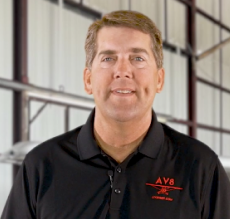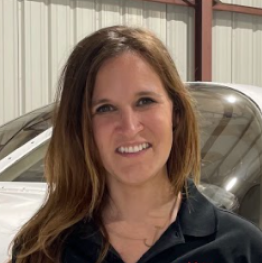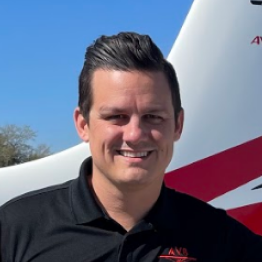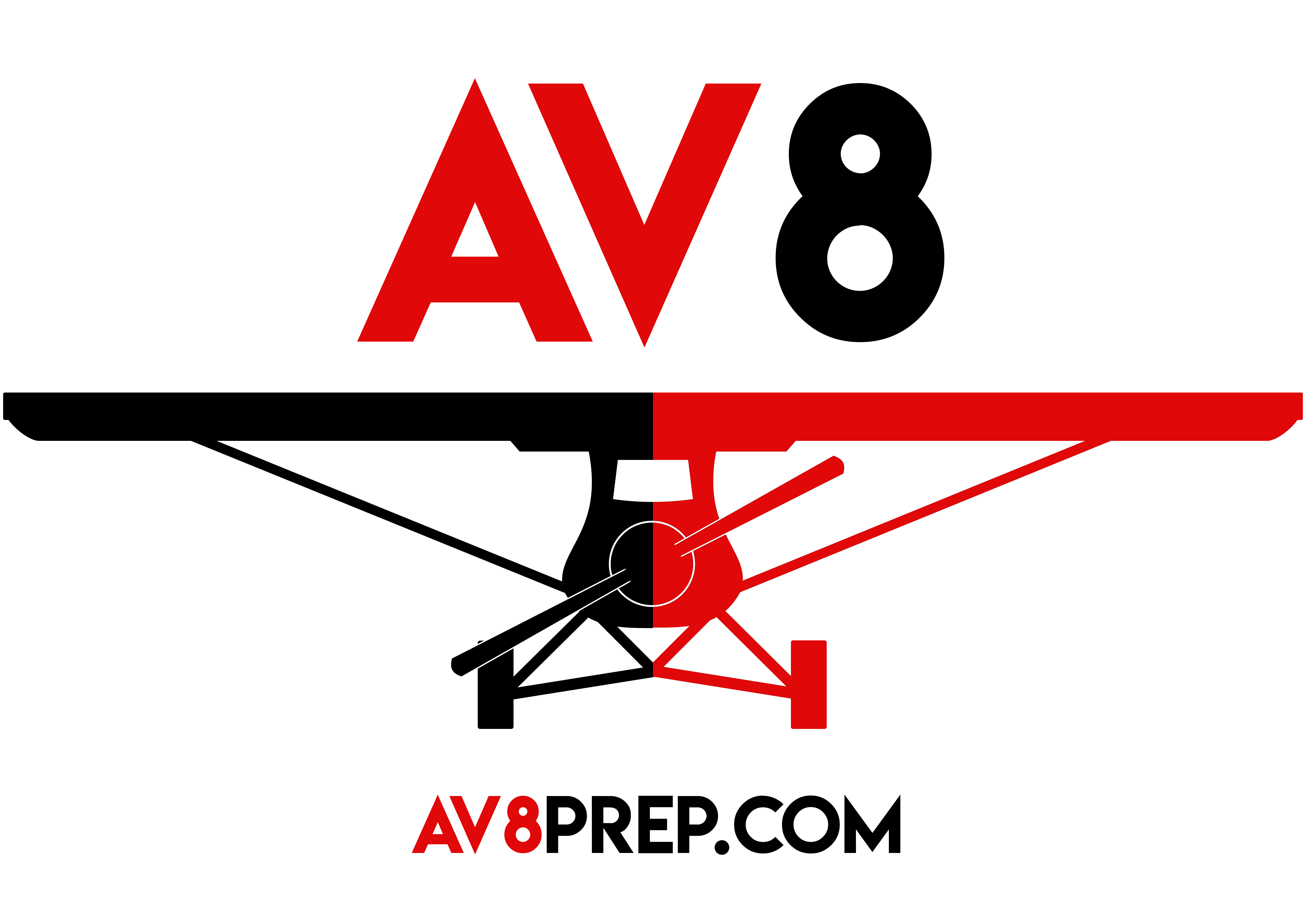- 1. Four Forces
- 2. Stalls & Spins
- 3. Ground Effect
- 4. Angle of Attack
- 5. Effects on Aerodynamics
- 6. Bank Angle & Load Factor
- 7. P Factor & Torque
- 8. Primary & Secondary Flight Controls
- 9. Load Factor & G Forces
- 10. Turns & Turn Rates
- 11. Airplane Stability
- 12. Multi-Engine Operations
- 1. Airplane Engines and How They Produce Power
- 2. Ignition System
- 3. Induction & Mixture Control
- 4. Carbureted Vs. Fuel Injected
- 5. Carburetor Ice & Carb Heat
- 6. Detonation & Pre-Ignition
- 7. Engine Overheating
- 8. Engine Instruments
- 1. Propeller
- 2. Flaps
- 3. Transponder 101
- 4. ELT & Emergency Frequency
- 1. Fuel Systems
- 2. Electrical System
- 3. Landing Gear System
- 1. Pitot Static System
- 2. Pitot Static – Errors & Failures
- 3. Airspeed Indicator
- 4. Vertical Speed Indicator
- 5. Altimeter
- 6. How to Read an Altimeter
- 7. Altimeter Errors
- 8. Setting Altimeter
- 9. Types of Altitudes
- 10. Flight Level Altimeter Settings
- 1. Gyro Instruments & Vacuum System
- 2. Attitude Indicator
- 3. Heading Indicator
- 4. Turn Coordinator
- 5. Magnetic Compass & Errors
- 6. Glass Cockpits
- 1. Density & Pressure Altitude
- 2. Calculating Density & Pressure Altitude
- 3. Takeoff Distance Charts
- 4. Cruise Performance Charts
- 5. Landing Distance Performance Charts
- 6. Landing Distance Table
- 7. Crosswind Components
- 8. V Speeds
- 1. Latitude & Longitude
- 2. VFR Sectional Chart
- 3. Airports on a Sectional
- 1. Calculating Time Zone Corrections
- 2. Zulu Time
- 3. Chart Supplement
- 4. NOTAMS
- 5. Weather Briefings
- 6. VFR Flight Plan
- 7. FSS
- 8. ATIS
- 1. Introduction to Fuel in Pounds
- 2. Weight & Balance
- 3. Weight & Balance Calculations
- 4. Weight & Balance Load Shift Computations
- 1. Engine Start
- 2. Taxiway & Destination Signs
- 3. Airport Lighting
- 4. Runway Markings
- 5. Airport Diagram
- 6. Taxi Wind Correction
- 7. LAHSO
- 8. Engine Runup & Pre-Takeoff Checklist
- 9. Hydroplaning
- 1. VFR Navigation
- 2. VOR 101
- 3. Using VOR
- 4. Distance Measuring Equipment
- 5. Ensuring VOR or DME is working
- 6. Knowing Where you are regarding VOR
- 7. Global Positioning System 101
- 8. WAAS vs. Non-WAAS
- 9. HSI 101
- 10. Finding intersections with VOR-LOC-DME
- 11. IFR En Route Chart Recap
- 12. IFR Approach Plate Recap
- 1. Causes of Weather
- 2. Stability of an Air Masses
- 3. Temperature Inversions, Dewpoint & Fog
- 4. Types of Clouds
- 5. Weather Fronts
- 6. Thunderstorms, Wind Shear & Microbursts
- 7. Icing / Reporting Icing
- 8. Frost, Freezing Rain and Wet Snow
- 9. Turbulence & Mountain Waves
- 1. Standard Pressure & Temperature
- 2. Convection & Circulation
- 3. Occluded Fronts
- 4. Jet Stream
- 1. Weather Radar
- 2. Weather Depiction Charts
- 3. METAR
- 4. TAFs
- 5. Airmets & Sigmets
- 6. PIREPS
- 7. High & Low Level Prog Charts
- 8. Aviation Graphics Forecasts
- 9. Convective Outlook Charts
- 10. Surface Analysis Charts
- 11. Winds & Temperature Aloft
- 1. Airspace Speed Limits
- 2. Class A-D
- 3. Class E & G
- 4. Special Use Airspace
- 5. Terminal Radar Programs
- 6. Special VFR
- 7. En Route IFR Chart Airspace (Airspace & SUA Depiction)
- 1. Unusual Attitude Recovery
- 2. Normal Takeoff & Climb
- 3. Crosswind Takeoff & Climb
- 4. Normal Approach & Landing
- 5. Crosswind Approach & Landing
- 6. Night Flying
- 7. Collision Avoidance & CFIT
- 8.Approach Lighting
- 9. En Route Weather Advisories
- 10. Lost Communications & Light Gun Signals
- 11. VASI, PAPI, PLASI
- 12. Wake Turbulence
- 13. Standard/Non-Standard Holds
- 14. Holding at DME Fix
- 15. Holding Pattern (Timing & Wind Correction)
- 16. Holding Pattern Entries & Speeds
- 1. RVSM
- 2. High Altitude Operations
- 3. Minimum Fuel
- 4. Commercial Emergency Operations
- 1. ATC Clearances & Instructions
- 2. Additional ATC Clearances
- 3. IFR Compulsory Reports
- 4. Communication Failures
- 5. Tower Talk – Basics & Ground Operations
- 6. Tower Talk – Pattern Operations
- 7. Tower Talk – VFR En Route
- 8. Tower Talk IFR
- 1. Aircraft Stuff
- 2. Pilot Rules
- 3. In Flight Rules
- 4. NTSB Part 830
- 5. Aeronautical Decision Making
